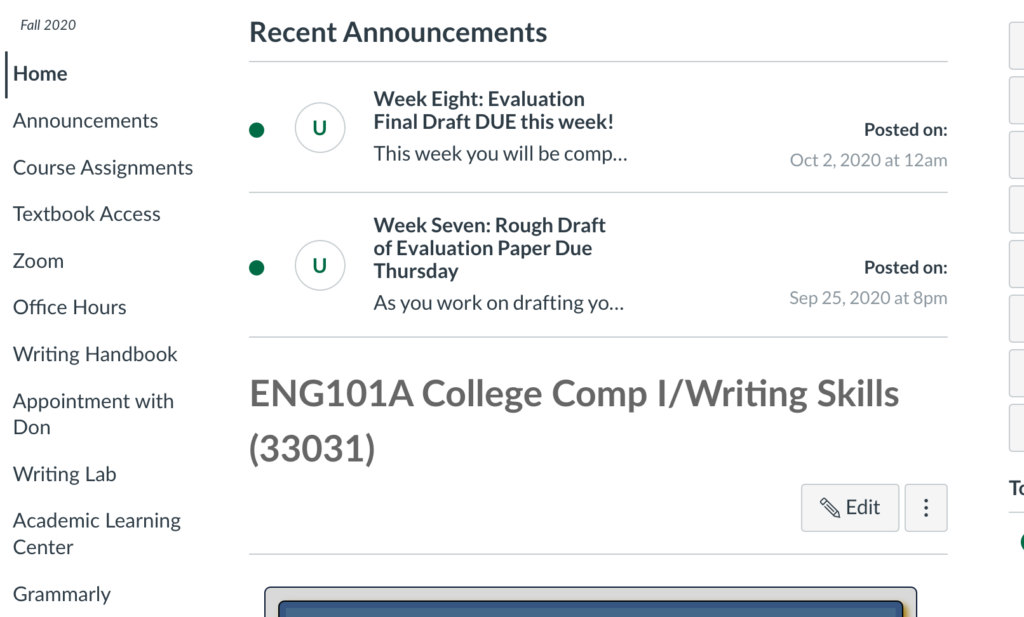Pandemagogy?
Imagine showing up to class, all ready to teach. Half of your students are hiding behind a cardboard box. Another quarter of the class is clearly in their pajamas and have just woken up (even though it’s almost noon). Dogs and children randomly run through the classroom, and most students are eating. Some of your students have mirrors with them and are checking to make sure they have struck exactly the right pose, while others are clearly checked out and enjoying conversations on their phones.

Whenever you turn around to write on the board, all but four students hide under their desks. Of course, you don’t know that because you can only see those four. If you’re lucky, they are students who aren’t hiding under a box. Then, if you happened to be in my classroom, you might be serenaded by a rogue four year old who breaks through locked office doors and starts playing the piano. 😉
If you’ve been teaching via Zoom any time since last March, this scenario probably sounds familiar. Our current reality can seem daunting, but I think that we can take away some important ideas as we move forward.
First, we know that students typically have a lower rate of success in an online course. Zoom can help to change those numbers. Students seem to do better when Zoom is utilized in their online courses. Even in the midst of the crazy uncertainty that was the second half of the Spring 2020 semester, my students by and large were successful in the courses where I met with them intentionally at least once a week. Many of our students crave that human connection–and Zoom, though imperfect, gives it to them. I know that, for some of my students, that weekly meeting was what kept them moving forward. In addition, the weekly check-ins provided some semblance of a schedule in days that were likely filled with Instagram and Netflix when students weren’t able to work or go to class.

Particularly in short term courses, having an optional live check in or easier access to faculty can be important for students who would rather be in the classroom. This semester, I added a link to my Office Hours (scheduled via Calendly) right into my course navigation, along with other tutoring options. It’s so exciting to see students “stopping by” to see me–whether they have a question, they are checking on their progress in the class, or they just need to see another human face. Students, in particular those who have never taken an online course, can be intimidated by them–but knowing that their teachers are right there if they need help gives them an added measure of confidence.
Secondly, I hope that this experience has taught us that we can and should reevaluate how we present our courses. In Fall 2019 and Spring 2020 (pre-pandemic), I was experimenting with Zoom. I combined my online and on campus courses into one section, then Zoomed every class session. In both semesters, I had a handful of online students who showed up to class every single day. They formed communities with the on campus students–some of them even forming study groups outside of class. When an on campus student was ill or had to travel, they still Zoomed into class from wherever they were, so this method was helpful for both online and on campus students–and it didn’t take much to set it up. I also intentionally Zoomed my hybrid 8 week sections, which turned out to be a good thing because, when my ENG 101 students came back for ENG 102 after the break, they were already familiar with Zoom and, though they weren’t happy about it, they handled it.
Many potential students in our county are excluded from participating in college because they can’t figure out how to make attending classes in person fit into their lives. Some students live too far away to drive to campus (or they don’t have transportation), but they can take a larger variety of classes because they are all online –and they can even still get the experience of attending in person with Weblive/Zoom. Other students can’t afford childcare for their young children, but they can bring those kids to a Weblive class because they have a mute button. Others have full-time jobs, but they can attend classes on their own time and not miss the lectures because they can watch the recordings. Still others have illnesses or disabilities that prevent them from attending class on a regular basis, but with Weblive/Zoom, they can still participate.
I hope that, when we return to normal, we don’t abandon all the things we learned from Zoom. With this tool, we can enhance our students’ experiences and help them to succeed, as well as creating a space where students traditionally excluded from participating in high education can find more ways to achieve their goals.
Karen
